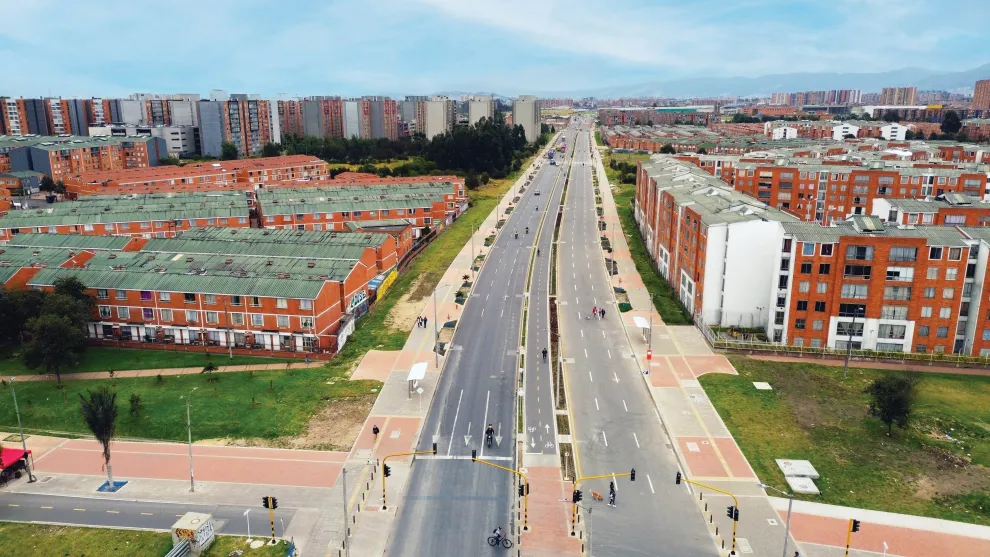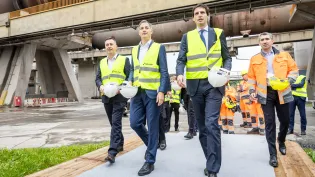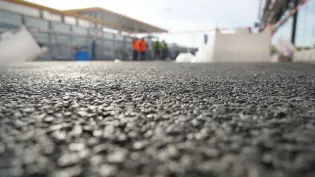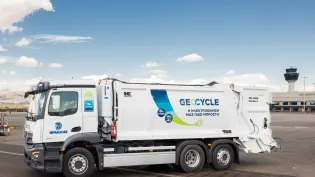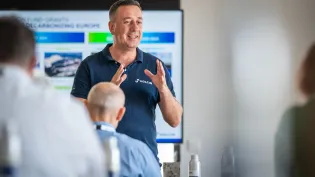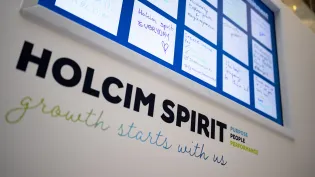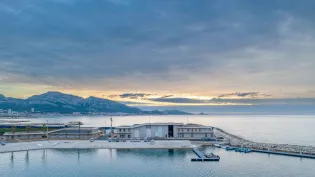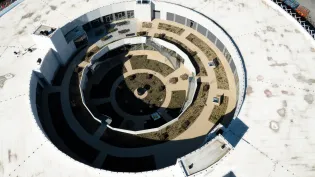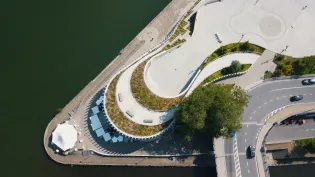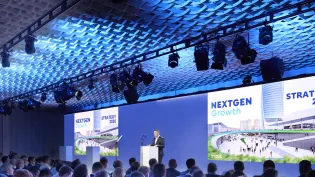Building mega infrastructure projects sustainably
Bridges, roads, metro projects, clean energy projects, dams. Infrastructure involves the fundamental physical structures and facilities that connect us all, and allow our society to operate efficiently, profitably and happily, even though we often take a lot of it for granted.

RODRIGO MARTIN
Holcim Group Commercial Head of Aggregates,
and Head of Infrastructure & Key Accounts
As Rodrigo Martin, Holcim Group Commercial Head of Aggregates, and Head of Infrastructure & Key Accounts puts it: “At Holcim we’re benefitting from global megatrends which are driving demand for our sustainable building solutions – which include rising populations and urbanization.
“Taking transport alone, people need to move to these cities, then they need to move around and get to work. This is where Holcim comes in, with our broad range of high-value solutions that can be used to build the sustainable infrastructure of the future.”
With Holcim’s high-value Building Materials and Building Solutions, under our strategy, NextGen Growth 2030, we’re serving markets and customers across the built environment - from infrastructure to industry and infrastructure to buildings.
Holcim is the leading partner for infrastructure projects of all sizes across the world, including a wide range of “mega projects”, and one of our biggest advantages is an Infrastructure and Key Accounts team, which Rodrigo leads.
“We work with contractors, owners, designers and developers to build partnerships that include not only commercial and operational stages, but also R&D – to ensure we can be involved in every project from a very early stage,” Rodrigo says.
“This allows us to propose new solutions, contributing to lower CO2 emissions, optimized materials and even redefine the way our customers build. Our objective is to support our business units and provide them with a unique opportunity to better prepare and capture value from large infrastructure projects around the world.”
The proof of concept? Iconic infrastructure projects with “Holcim Inside”.
“Each of these projects illustrates why large infrastructure projects are a strategic segment for Holcim, offering profitable growth potential for our businesses while allowing us to prescribe and supply integrated and branded solutions for iconic projects, creating value for our customers and even redefining the way they build,” Rodrigo says.
Connecting the UK with HS2
HS2 (High Speed 2) is a major high-speed rail initiative in the United Kingdom that will improve transportation links between London and The Midlands, with trains set to operate at speeds of up to 360 km/h, making them some of the fastest in Europe. The planned route consists of London (Euston) to Birmingham (Curzon Street), with an interchange at Old Oak Common in West London and an interchange station in Solihull, West Midlands.
Holcim UK is supplying ready-mix concrete, cement, and aggregates to the main civils works, tunnel sections, and key stations at Curzon Street and Old Oak Common. In total, we are delivering over 1.2 million m3 of concrete to the project, including 300,000 m3 of ECOPact for Old Oak Common Station and 180,000 m3 for precast tunnel and viaduct segments. These lower-carbon mixes are achieving CO2 reductions of up to 60%.
A significant share of the concrete is being produced at our dedicated on-site batching plants, substantially reducing lorry movements and associated emissions. A fully electric Putzmeister eMixer is supporting HS2 operations in the West Midlands – providing zero-emissions transport and significantly lower onsite noise levels.
“It's exciting to be part of innovative and ground-breaking projects like HS2, which require the development of new techniques, technologies or processes that can push the business forward and develop new ground. It’s a source of pride for our whole team.”
Building bridges in Bordeaux, France
At 549 meters long and 44 meters wide, Bordeaux’s Simone Veil Bridge combines technical excellence, aesthetics and environmental performance. Opened on July 6, 2024, it is the sixth bridge connecting the banks of the Garonne River between Bordeaux, Bègles and Floirac, and was designed for all modes of transport to optimize traffic while also creating a new public leisure space on the water.
4,000 tons of Holcim’s ECOPlanet cement enabled this project, and Garandeau Bétons, our partner, used it to create foundational concrete with a 50% lower CO2 footprint.
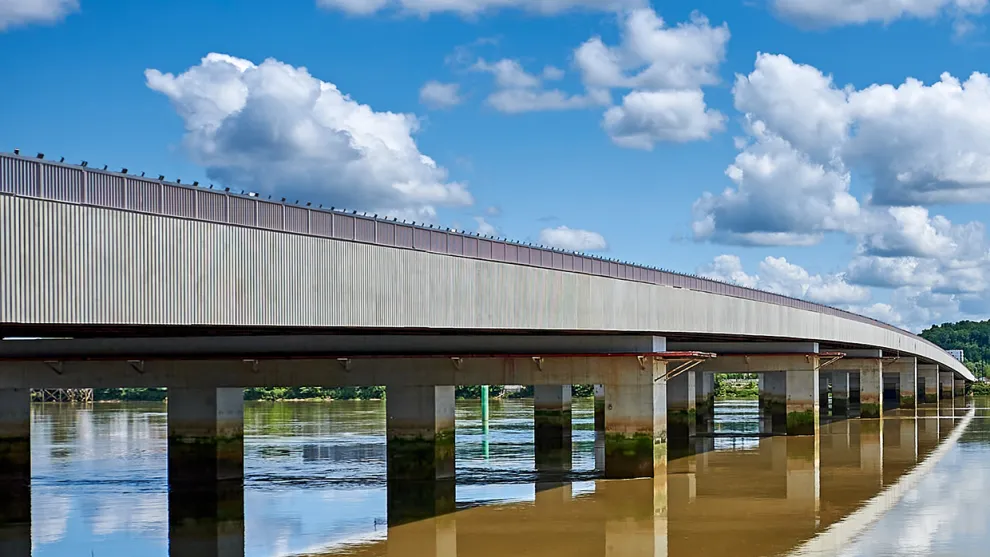
“We’re honored to have participated in the construction of the Simone Veil Bridge and extremely proud to have provided concrete to improve its carbon footprint.”
Melbourne’s (sustainable) missing link
The North East Link Project is a major infrastructure project in Melbourne, Australia, designed to complete the missing link in the city’s orbital freeway network and change the way people move around the city. As Melbourne’s largest-ever road project, it will close the gap in the freeway network – removing 15,000 trucks from local roads daily and reducing travel times by up to 35 minutes.
Holcim is supporting the project’s sustainable delivery by supplying approximately 350,000–400,000 m3 of ECOPact low-carbon concrete as well as ECOPact Max (80% supplementary cementitious materials) in non-structural applications – nearly half of the total 800,000 m3 required volume – and over 4,460 culverts for the 6.5-kilometer twin tunnels and related infrastructure. Each culvert incorporates 25% supplementary cementitious materials (SCMs), reducing emissions without compromising strength. Every mix supplied comes with an Environmental Product Declaration (EPD), offering independent verification of its environmental impact across the entire life cycle – from raw materials to disposal.
By integrating innovative materials and sustainable construction methods, Holcim is helping to significantly reduce the project’s carbon footprint. The result will be faster commutes, quieter neighborhoods, and cleaner air – delivering lasting benefits to Melbourne’s communities.

Transforming mobility in Bogota, Colombia
Drivers in Bogotá lose, on average, 117 hours a year due to traffic jams. An ambitious infrastructure project in the southwest of the city, Guayacanes Avenue, is tackling this issue. 12.2 kilometers in length, it has six lanes, as well as modern bridges for vehicles and pedestrians. As well as optimizing and minimizing traffic in the Kennedy and Bosa districts of Bogotá and helping 1.5 million people get around more quickly and efficiently, it is also a milestone in sustainable construction.
As a key partner in this project, Holcim supplied different types of aggregates, a wide range of concretes – including ECOPact – and ECOPlanet cement for the third phase of this project (five kilometers of road and the vehicular bridge between Guayacanes Avenue and Boyacá Avenue).
Using more than 8,160 m3 of our sustainable building solutions, the project’s construction phase avoided more than 594 tons of CO2 emissions, equivalent to two million kilometers travelled by a gasoline-powered car. Furthermore, as the first company in the construction sector in Colombia with Environmental Product Declarations (EPDs) for its entire cement and concrete portfolio, Holcim helped our client to achieve sustainable construction certifications.
